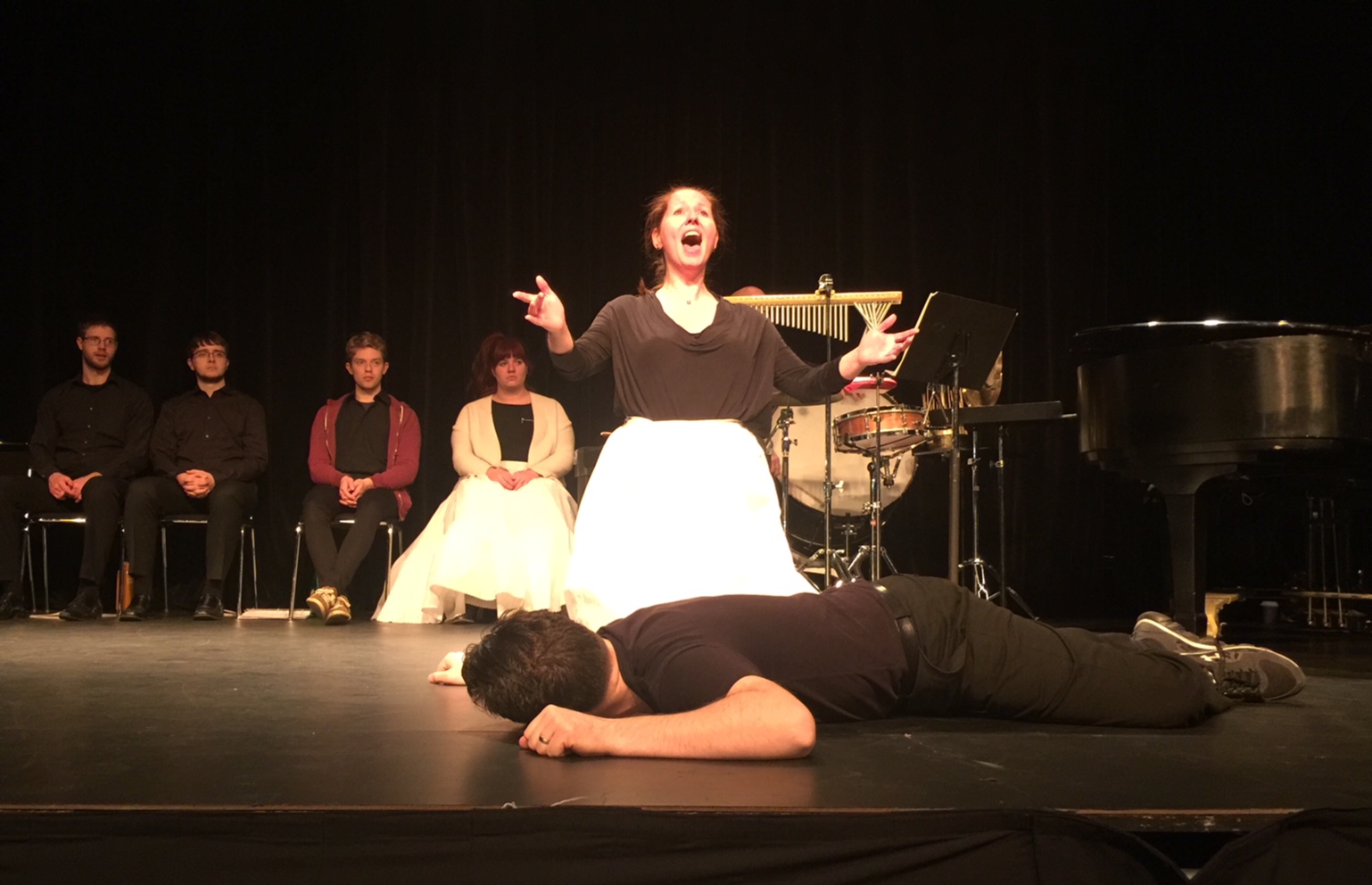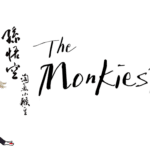It was a tale of two D’Arcy McGees as the Hamilton Philharmonic Orchestra presented a double bill of Dermot Nolan’s play, It’s Morning Now followed by the premiere of HPO composer-in-residence Abigail Richardson-Schulte’s chamber opera, Shot, in The Studio at FirstOntario Concert Hall on Thursday, December 7.
The McGee: An Evening of Theatre and Opera opened with 30 actors from The Players’ Guild of Hamilton presenting Act 1 and a portion of Act 2 from their current run of Nolan’s biographical play which traces McGee’s adult life from drunken Irish revolutionary to assassinated father of Confederation. Nolan, a Hamilton-based lawyer and HPO board member who became interested in McGee after reading David A. Wilson’s biography, posits that McGee was shot by Thomas Blake, a Donegal magistrate who used James Whelan’s gun to carry out the dastardly deed (done offstage in his play). In his playwright’s notes, Nolan readily acknowledges that his play “rests on a highly improbably fiction of his (McGee’s) murder.”
Actor Michael Hannigan was a voluble McGee, commanding your eye and ear in each of his scenes. He was ably abetted by Stephen O’Brien as Mundy Hay and further set into relief by D’Arcy Wilson’s cow hearted Whelan.

Rehearsal for Shot: Stage Director Anna Theodosakis with Mrs. Trotter (Christina Bell) and D’Arcy McGee (Peter Bass) Photo: Michael Schulte, Tony Qiu, and The COSI Connection
Richardson-Schulte’s Shot, her sixth chamber opera to date, was inspired by Nolan’s play, but is not an operatic adaptation of it. Shot was commissioned by the HPO with financial support from Ontario 150, the City of Hamilton, and the Incite Foundation. However, funding, which only fell into place earlier this year, came with the stipulation that the project be completed in 2017. That meant abandoning the original plan of a full length opera on McGee’s life for a 34-minute chamber opera which enters the McGee story midstream, focusing on the evening of his assassination and his trial.
Hamilton-based author and librettist Anna Chatterton handed Richardson-Schulte a draft of the libretto by early August, with the latter providing a vocal score by October 1st to Darryl Edwards, artistic director of the Centre for Opera Studies in Italy which partnered with the HPO in the performance, and to Kathryn Tremills who served as music director. Richardson-Schulte took another month or so to orchestrate the work for a five-piece chamber ensemble of violin, viola, cello, piano and percussion.
Chatterton’s finely crafted, eight-page libretto brims with rhythmic prose of which Mrs. Trotter’s “Tap tap tap / Rattling at my hall door… / Crack crack crackle: Fireworks? / What? What? Rush rush! / Slump / Slump slump thump / Red / Splatter / Splatter on my doorway / Blood. Blood? Blood! / Dead man. Blood. No face” is one example among many. With no small amount of dramatic-operatic licence, Chatterton brings back the murdered McGee as a ghost to comment on the proceedings, ending the opera with the lines, “I am worn and grey / My hands be dust, my lips be clay; / I will go to the altar of God / Ever and ever I will stay. / Remember me…” Surprisingly, Chatterton’s ghostly McGee doesn’t finger Whelan, asking, “But was it him? Was it Whelan?”
With little to no character development to play upon, Schulte’s vivid and through-composed score successfully set into relief the shifting moods of characters and situations. Mary McGee’s “Dead! Dead! Who, who made him blood” contained a mini-kaleidoscope of emotions. At times, Richardson-Schulte’s music also underscored the nationalities of the characters. Irish fiddle-type figurations accompanied Whelan’s protestations that “The only truth is that I am Irish.” With precious little doubling of the vocal line, Richardson-Schulte’s transparent scoring ensured complete audibility of the sung text. There were moments of novelty such as when the string players stomped their feet to the chorus’ “Clink, slam, clink in the slammer. Hammer hammer in the court” and when they spoke the Jury’s “tick, tock, tick, tock.”
Shot was semi-staged with no set, though period costumes similar to those in It’s Morning Now were worn. Unfortunately, prime real estate on the 16 X 32 foot stage was taken up by chairs for the ten-member cast, plus the five instrumentalists (violinist Stephen Sitarski, violist Brandon Chui, cellist Laura Jones, Ms. Tremills at the grand piano, and Jean Norman Iadeluca handling a small array of percussion items) and conductor Kimberley-Ann Bartczak. Under these constrained circumstances, and in spite of stage director Anna Theodosakis’s effective blocking, Shot came off as a park-and-bark production.

Rehearsal for Shot: O’Reilly (Peter Warren) with Conductor Kimberley-Ann Bartczak and members of the Hamilton Philharmonic Orchestra Photo: Michael Schulte, Tony Qiu, and The COSI Connection
In contrast to Hannigan’s animated McGee, baritone Peter Bass’s McGee was one dimensional and as stiff as starch. Tenor Ryan Downey was a caustic Whelan in “He would swear.” Soprano Christina Haldane brought out all of the colours and moods in Mary McGee’s “Dead! Dead!” Soprano Christina Bell was a distraught Mrs. Trotter in “Slump.” Tenor Michael Marino choked back emotion on Sir John A. MacDonald’s line “Is no more” referring to McGee, though his voice seemed to give way in defense attorney Cameron’s line “All of these circumstances.” Bass Peter Warren was heard as crown prosecutor O’Reilly, though his top register was too thin in policeman O’Neill’s “Smith and Wesson Revolver.” Baritone Jeremy Ludwig acquitted himself well as the Judge and in his chorus role along with tenors Tony Qui, Jacob Abrahamse, and baritone James Sandau.











